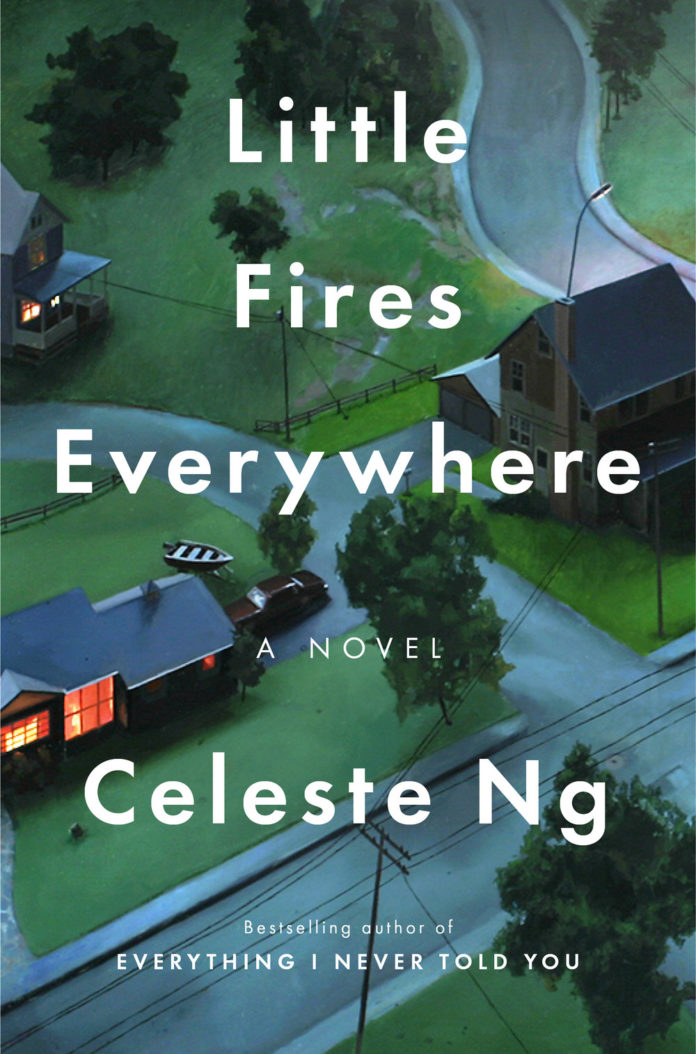By Darby Good | News Editor
“Little Fires Everywhere” is one of those incredible books meant to challenge what and how you think. Author Celeste Ng does this by taking the idea of what makes a “good parent” and using different story lines to show the similarities all mothers share no matter race, money or social standards.
She leaves readers with one main question: How far are you willing to go for your child?
Hulu premiered the first three episodes of a mini-series based the book March 17, and the following episodes premiere Wednesday. In preparation, it’s important to look back at the book that started it all.
The book mainly focuses on two polar opposite mothers, Elena Richardson and Mia Warren. The two women have raised their children very differently, and as their kids become friends, they see how one mother has what the other does not. One has given her children the world and they’ve never had to worry about money while the other doesn’t have money to offer, so her relationship with her daughter is entirely different.
This is also expressed by how they are referred to throughout the book. Elena Richardson, a local reporter and Mia’s landlord, is cited as Mrs. Richardson throughout the novel with her first name only used a handful of times. Mia Warren, a nomadic artist, is solely referred to as Mia, which shows the women’s differences not only in how they act, but in how the reader perceives them simply by their names.
Each mother chronicled in the book goes through her own journey, igniting her own fire of how boundless her love is for her child. Each character takes different journeys to spark their own fires, allowing readers to see that while the characters disagree and say hateful things to one another, deep down their hearts are in the same place.
The book is set in a town called Shaker Heights, which personifies the conflict between the different types of families. The town prides itself on being a planned community, which carries into a societal belief that all the best things are planned. Residents of the town grow up with this same way of thinking, which only confuses Mia more when she moves into Shaker Heights without a plan.
Mia’s nomadic lifestyle of chasing artistic inspiration greatly confuses the town and draws lines between Shaker Heights, people who believe in careful planning, and free spirits who are creating their own paths in life. When it comes to unplanned life changes, the book takes these opportunities to show the characters a new facet of themselves that ultimately proves their similarities are stronger than their differences.
The little fires the book is named after are both literal and metaphorical, perfectly encapsulating the ideas Ng encourages readers to find in her book. The book begins with a house burning down, and ends with the characters finding their own passions, or fires. When the mothers go head to head, their arguments are primarily focused on the impact of how one lives and how much money one has. It is even said that one of them is a “bad mother” because she has a minimum wage job.
The book tears down these walls and challenges readers to look past socioeconomic stance to see the hearts of these women while leaving no right or wrong answer.
“Little Fires Everywhere” is one of those books that you can read over and over again throughout the years, and it starts to mean something different with each read.
I read the book as a part of my family book club. In our discussion, the book meant something to me as a daughter who has seen how much my mom has fought for my sister and me. My mom read the book and connected with the mothers because she has found herself in similar situations while raising her family.
Especially now, as our communities are having to adapt to an ever-changing world, it’s important to know why we’re fighting to create a better future. The mothers in “Little Fires Everywhere” fight because they want what is best for their families, and in many ways that is what we are seeing globally today. The book is a perfect reminder of why we continue to care and fight for one another’s safety during times of hardship.





